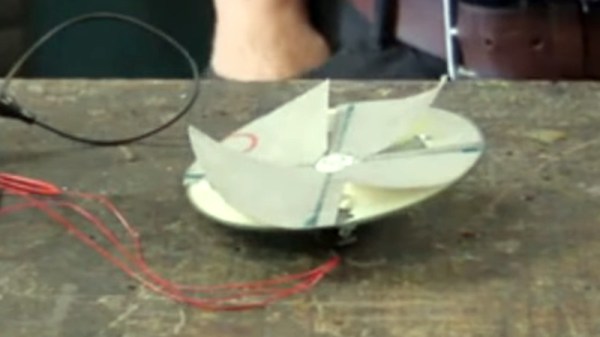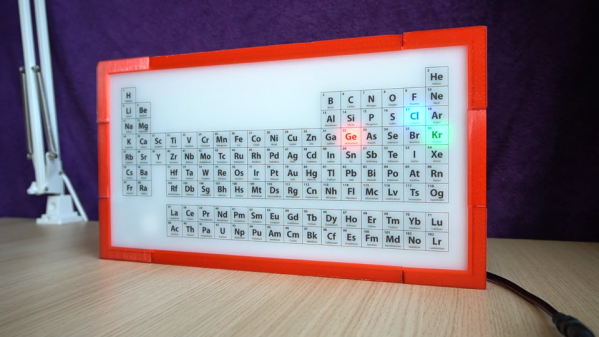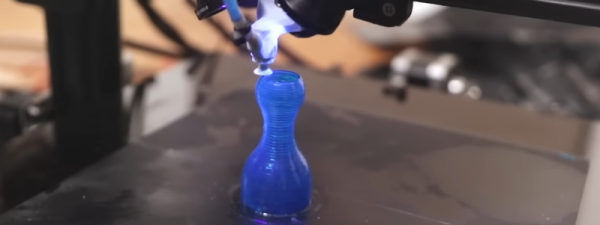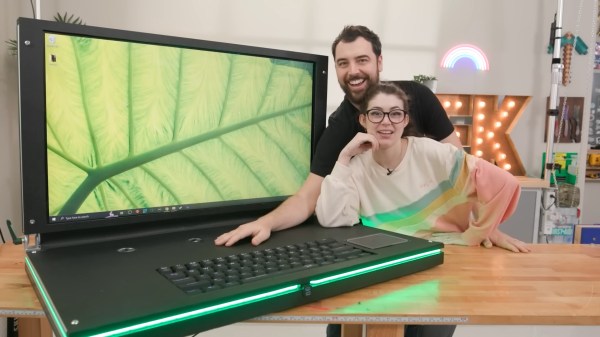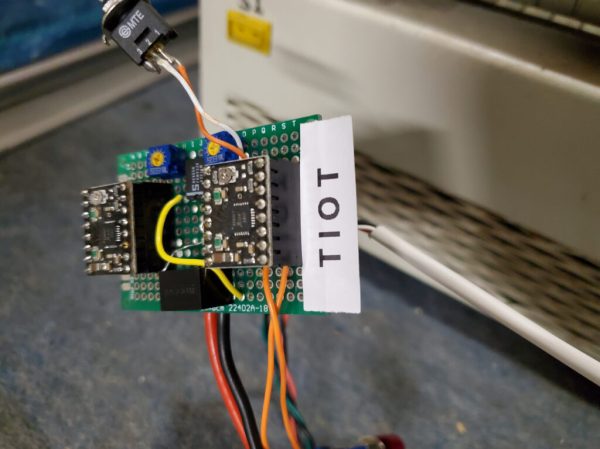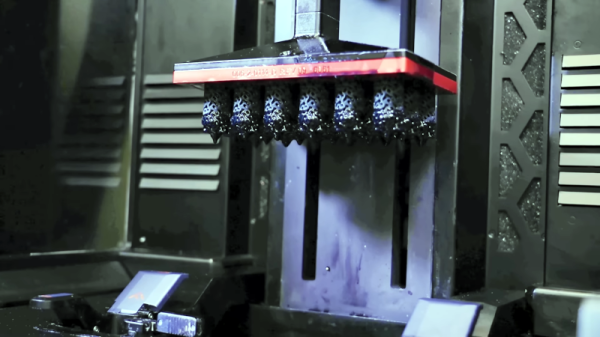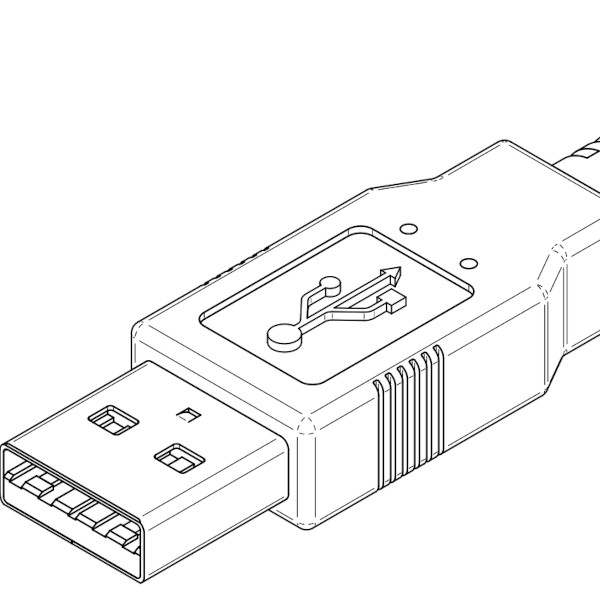Rockets are conceptually rather simple: you put the pointy bit upwards and make sure that the bit that will go flamey points downwards before starting the engine(s). Yet how to start each rocket engine type in a way that’s both safe and effective? Unlike in the Wile E. Coyote cartoons, real-life rocket engines do not have a fuse you light up before dashing off to a safe distance. Rather they use increasingly more complicated methods, which depend on the engine type and fuels used. In a recent article written by [Trevor Sesnic] with accompanying video featuring everyone’s favorite Everyday Astronaut [Tim Dodd], we’re taken through the intricacies of how flamey ends are made. Continue reading “The Intricacies Of Starting A Rocket Engine”
How Simple Can A Wind Generator Get?
As the world has moved towards sustainable energy sources over the last few years, it’s increasingly common to be close to a wind turbine. The huge turbines visible on the horizon from where this is being written are the upper end of the scale though, and along comes [Robert Murray Smith] with the opposite, probably the simplest and smallest wind turbine we’ve seen.
His use of a 3-phase motor from a CD-ROM drive as the generator isn’t particularly unexpected, these motors are ubiquitous and readily generate power when spun up. A simple 3-phase rectifier and a capacitor delivers a DC voltage that while the ready availability of switching converter modules should be relatively easy to turn into something more useful.
The clever part of this hack lies then in the rotor, it’s not the propeller-style bladed affair you might expect. Instead he takes a CD, as it’s the obvious thing to fit on a CD motor, and glues a piece of Tyvek on top of it. This is cut to form four flaps which make a rudimentary but effective turbine when the wind comes from the side. It’s beautifully simple, and we wish we’d thought of it ourselves. The whole thing is in the video below the break, so take a look.
Maybe this won’t solve the green energy requirement on its own, but we’ve shown you far larger fabric turbines in the past.
Displaying The Time Is Elemental With This Periodic Table Clock
We see a lot of clocks here at Hackaday, so many now that it’s hard to surprise us. After all, there are only so many ways to divide the day into intervals, as well as a finite supply of geeky and quirky ways to display the results, right?
That’s why this periodic table clock really caught our eye. [gocivici]’s idea is a simple one: light up three different elements with three different colors for hours, minutes, and seconds, and read off the time using the atomic number of the elements. So, if it’s 13:03:23, that would light up aluminum in blue, lithium in green, and vanadium in red. The periodic table was designed in Adobe Illustrator and UV printed on a sheet of translucent plastic by an advertising company that specializes in such things, but we’d imagine other methods could be used. The display is backed by light guides and a baseplate to hold the WS2812D addressable LEDs, and a DS1307 RTC module gives the Arduino Nano a sense of time. The 3D printed frame of the clock has buttons for setting the time and controlling the clock; the brief video below shows it going through its paces.
We really like the attention to detail [gocivici] showed here; that UV printing really gave some great results. And what’s not to like about the geekiness of this clock? Sure, it may not be as action-packed as a game of periodic table Battleship, but it would make a great conversation starter.
Continue reading “Displaying The Time Is Elemental With This Periodic Table Clock”
FDM Printing With Resin Update
[Proper Printing] is at it again. He’s trying to perfect his hybrid printer that works like an FDM printer but uses UV-curable resin gel instead of filament. You can see the latest update video below. If you missed our take on his early attempts, you might want to catch up with those earlier videos first.
The latest update brings a new nozzle, an improved light source, and changes to the formula of the resin. The nozzle and light source improvements hinge on conical lenses that convert the laser beams from a spot to a ring. The initial nozzles looked like the business end of a syringe, but this wasn’t very stable. The new video shows a conventional nozzle which also had some issues. This resulted in a custom-made nozzle that solved all the issues with the conventional nozzle and the syringe tips.
The resin formula is particularly crucial. The second attempt used resin with glass beads to give thickness. That wasn’t without problems, though, so it was switched this time with fused silica, as suggested by some comments on a previous video. They also used aggressive mixing and air removal. The consistency of the previous resins was that of a paste, but according to the video, the new mixture is more like a gel.
At some point, things started going badly. There were several equipment failures. Exasperated, he was ready to give up and was editing the video when he had an epiphany. We’re glad he didn’t give up because the new results are pretty impressive.
These printers remind us of some strange laser CNC. It also reminds us a little of people curing resin outside of the normal print process.
Supersized Laptop Laughs In The Face Of Portability
Sometimes a project needs to go big, and [Evan and Katelyn] threw portability to the wind to build the “world’s biggest” laptop.
Stretching the believability of “bigger is better,” this laptop features a 43″ screen, an enormous un-ergonomic keyboard, and a trackpad that might be bigger than your hand. Not to be outdone by other gaming laptops, it also features RGB lighting and a logo that really pops with neon resin.
The pair started the build with an aluminum extrusion frame joined by hinges. Plywood forms the top lid and bottom of the device, and the interior was covered with a mix of vinyl and ABS to keep everything tidy. A nice detail is the windows cut in the area above the keyboard to keep an eye on the charge of the two battery packs powering the laptop. Weighing more than 100 pounds, we suspect that this won’t be the next revolution in computing.
If you need more supersized gadgets, maybe try out the world’s biggest working keyboard or this giant Xbox Series X?
Fixing A Reflow Oven’s Conveyer Belt With An NE555 And Stepper Motors
Some design choices on manufacturing equipment really leave you scratching your head for a while, as recently happened to [Chris Cecil] when the belt on a reflow oven’s conveyer snapped. Although the solution seems simple enough, getting a new belt on the thing would involve essentially taking the entire machine apart, before reassembling it again. Thus the frayed belt went through the oven over and over until during a recent production run of Smoothieboard controller boards until [Chris] heard a funny noise and the conveyer ground to a halt.
Moving the conveyer by hand kind of worked, but with a more permanent fix urgently needed to finish the production run, two stepper motors took the place of the belt, which just left driving these steppers to keep the conveyer moving in sync. Lacking a simple Arduino board to toss at it, and with a Smoothieboard being absolute overkill, [Chris] figured that a humble NE555 timer IC ought to do the job just as well.
Using a project on Hackaday.io by [KushagraK7] as the starting point, and a 1992-vintage NE555 IC harvested from an old project, [Chris] managed to put together a basic stepper driver that uses the NE555 to provide the timing signal. In addition to restoring basic functionality like starting and stopping the conveyer belt, [Chris] added a new feature with the reversing of the conveyer direction. Along with some cobbled together components to physically rotate the conveyer’s two rollers, it restored the reflow oven to working condition.
And one day the prototyped driver board will be updated to a proper PCB. It’s only temporary, after all :)
Continue reading “Fixing A Reflow Oven’s Conveyer Belt With An NE555 And Stepper Motors”
3D Printing Antennas With Dielectric Resin
[Machining and Microwaves] has long wanted to use a 3D printer to print RF components for antennas and microwave lenses. He heard that Rogers — the company known for making PCB substrates, among other things — had a dielectric resin available and asked them if he could try some. They agreed, with some stipulations, including that he had to visit their facility and show his designs in a video. Because of that, the video seems a little bit like a commercial, but we think he is genuinely excited about the possibility of the resin.
Since he was in their facility, he was able to interview several of the people behind the resin, and they had some interesting observations about keeping resin consistent during printing and how the moonbounce feed he wanted to print would work.
Some of the exotic RF test equipment was interesting to see, too. The microwave lenses look like some kind of modern art. According to the Roger’s website:
Radix Printable Dielectric materials are a ceramic-filled, UV-curable polymer designed for use with photopolymer 3D-printing processes like sterolithography (SLA) and digital light processing (DLP) printing. These materials and printing processes enable the use of high-resolution, scalable 3D-printing for complex RF dielectric components such as gradient index (GRIN) lenses or three-dimensional circuits. The 2.8Dk printable dielectric is designed to have low loss characteristics through millimeter wave (mmWave) frequencies and low moisture absorption for end-use applications.
It isn’t clear to us that you could use this resin in your own printers, but they did look pretty similar to what we have hanging around except, perhaps, for the continuous circulation of the resin pool. We figured the resin wasn’t inexpensive. In fact, we found a liter online for $1,863. We don’t know if that’s the suggested retail price or not, but we also suppose if you need this material, you won’t be that surprised at the cost.
If you don’t need microwave frequencies, you might be able to get by with some easier techniques. Or, you can even do something slightly more difficult but probably a lot cheaper.
Continue reading “3D Printing Antennas With Dielectric Resin”


